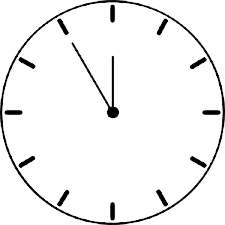Software and hardware optimization are crucial in portable devices where battery life reigns supreme. However, the device’s timer resolution is often overlooked in this optimization process.
Timer resolution refers to the interval at which a device’s timer operates, affecting its power consumption. In this article, we delve into the relationship between timer resolution and battery life, exploring how adjusting this setting can impact the longevity of your device’s battery.
Table of Contents
Understanding Timer Resolution
Timer resolution is the frequency at which a device’s hardware clock interrupts the processor to perform tasks. This resolution determines the precision of timing operations in software applications. A lower timer resolution means the device’s timer interrupts the processor less frequently, conserving power. Conversely, a higher timer resolution increases the frequency of interrupts, potentially consuming more battery power.
The Impact on Battery Life
The correlation between timer resolution and battery life is intricate. While a higher timer resolution may provide more precise timing for specific applications, it can also lead to increased power consumption due to frequent interruptions. Conversely, lowering the timer resolution can reduce power consumption but may sacrifice timing accuracy in some scenarios.
Experimental Analysis
Numerous studies and experiments have been conducted to assess the impact of timer resolution on battery life. These experiments involve adjusting the timer resolution settings on various devices and measuring the resulting changes in power consumption and battery longevity. Results have shown that, in many cases, lowering the timer resolution can lead to noticeable improvements in battery life, especially during idle or low-demand tasks.
Optimization Strategies
Manufacturers and software developers employ various strategies to optimize timer resolution for improved battery life without compromising performance. These strategies include dynamically adjusting timer resolution based on system workload, prioritizing low-resolution timers during idle periods, and optimizing software to minimize unnecessary timer interrupts.
Real-World Applications
The implications of timer resolution optimization extend to a wide range of portable devices, including smartphones, laptops, tablets, and wearables. In smartphones, for instance, lowering the timer resolution during inactivity can significantly extend battery life without impacting essential functions like push notifications and background tasks.
Challenges and Considerations
While adjusting timer resolution can yield benefits in terms of battery life, it’s essential to consider potential drawbacks and limitations. Specific applications and tasks may rely heavily on precise timing, making them sensitive to changes in timer resolution. Aggressive timer resolution optimization may also introduce compatibility issues with specific software or peripherals.
Best Practices for Users
For end-users seeking to maximize battery life on their portable devices, exploring timer resolution settings within the device’s power management options is advisable. Experimenting with different timer resolution configurations while monitoring battery performance can help determine the optimal balance between power efficiency and performance for specific usage scenarios.
Conclusion
Every aspect of hardware and software optimization matters in the quest for prolonged battery life on portable devices. While often overlooked, timer resolution plays a significant role in determining power consumption and battery longevity.
By understanding the impact of timer resolution and implementing appropriate optimization strategies, users can enjoy extended battery life without sacrificing essential functionality. As technology evolves, optimizing timer resolution will remain vital for manufacturers and developers striving to deliver efficient and sustainable portable devices.
